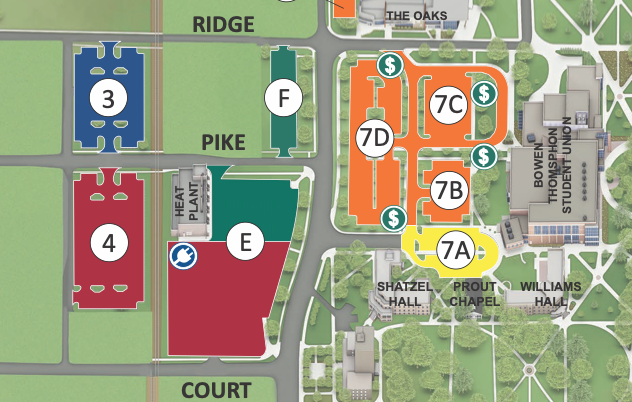MCT
Adam Grossman heard it as a child, when his grandparents wanted to keep a secret. For Ruven Kogel, it was the punch line of a joke and the lyrics of a favorite klezmer tune.
But they never understood Yiddish, the language of their Jewish forebears, until joining a new class at Stanford University this fall. Almost extinguished by the Holocaust, then lost in the memories of aging survivors, Yiddish is now emerging as a respected academic discipline.
“I see it as a way to better understand my culture,” said Kogel, 23, a materials science student of Ashkenazi Jewish heritage. “And I felt it was important to connect with this aspect of my music.”
Before World War II, three-quarters of the world’s 17 million Jews spoke Yiddish_most in Eastern and Central Europe. Today, linguists believe the number to be less than 1 million.
Within the past few years, a young generation of linguists has begun learning the language not just at Stanford, but at the University of California-Berkeley and an estimated 50 other universities. They include Harvard, Yale and the University of Indiana.
Scholars hope its rich literary, poetic and musical tradition can be saved, said Gabriella Safran, associate professor of slavic languages and literatures at Stanford, who conceived of the class.
“Learning a language makes you see the things you can’t translate,” said Safran. “It’s a worldview that you get access to only when you read literature in the original.”
While there has been off-and-on interest at Stanford in recent decades, this year the university committed to a three-year program_long enough for students to gain some fluency. In addition to the language class, which has five students, others who already speak some Yiddish are reading literature by such authors as Sholom Aleichem.
In addition to a program in Jewish studies, Stanford has a rich Eastern European and Judaica collections built by Stanford’s respected Judaica librarian, Zachary Baker.
“People interested in Jewish history come from all around the world to study here,” said Safran. “Stanford has unbelievable library resources in Yiddish and Eastern European anything. It is one the best places in the world to study Eastern Europe and the former Soviet Union.”
It is only now, after thousands of years, that academia is finally taking Yiddish seriously, she said. Throughout its history, it was dismissed as a language of commoners.
Its birth is traced back to around the 10th century, when Jews left France and Italy to escape persecution and settled in towns along the Rhine.
The new language was a dialect of German, written phonetically using the Hebrew alphabet. It borrowed from Hebrew, French, Italian and Slavic languages.
“It was the vernacular language for women and underclass men,” said Safran. “It is not a high literature.” Educated men spoke Hebrew.
Yiddish took root in Eastern Europe and became the native tongue of Ashkenazi Jews there. In the early 1900s, it accompanied waves of Eastern European immigrants to America, becoming an everyday language in the urban Jewish neighborhoods. Between 1925 and 1955, two dozen radio stations in the New York City area broadcast Yiddish material.
But new generations of Jews assimilated quickly into the English-speaking culture. An anti-immigration law passed in 1924 limited migration of Eastern European Jews.
The Holocaust dealt the language a near-fatal blow. Half of the world’s Yiddish speakers were killed.
“With World War II, there was a tremendous break and rupture. It is a tragic story,” said Safran.
Survivors of the war proudly embraced the more ancient language of Hebrew, burying their association with what was often seen as the tongue of the ghetto. The new state of Israel made Hebrew, not Yiddish, its official language. In the Soviet Union, Stalin outlawed the language.
The once-thriving literary community seemed headed for linguistic extinction. It stayed alive largely because of ultra-Orthodox communities and yeshivas.
“Because 90 percent of Jews lost in the Holocaust spoke Yiddish, we should not forget their language and culture. There is a rich literature, poetry and music that they left,” said Philip Kutner of San Mateo, who is active in the growing off-campus Yiddish revival and also goes by the Yiddish name “Fishl.”
Scholars attribute the growth to a number of factors. The Hebrew language is now well-established in Israel, so Yiddish is no longer seen as a threat for time and attention. And interest has shifted beyond the Holocaust to exploring Jewish cultures that existed prior to the war.
Modern students seek a window into their past, said Safran.
In the Stanford class, students cautiously wrap their tongues around each new word.
Instructor Jordan Finkin, on loan from UC-Berkeley, is patient.
“Let the nasal release go right through the nose,” he said. “Flatten your tongue against the ridge behind your teeth.”
Later in the class, he encouraged the students: “Get your mind around the sentence structure,” and “Don’t let your Hebrew confuse you!”
It’ll always be a second language, never again what it once was, scholars acknowledge. But it offers an important lesson, not just in linguistics, but in history.
“When students read Yiddish literature, they can start to experience what it is to live between many languages. And that tells them something important about Jewish culture,” said Safran.
“It is a fusion language. When you learn it, you see the history of our people.”













